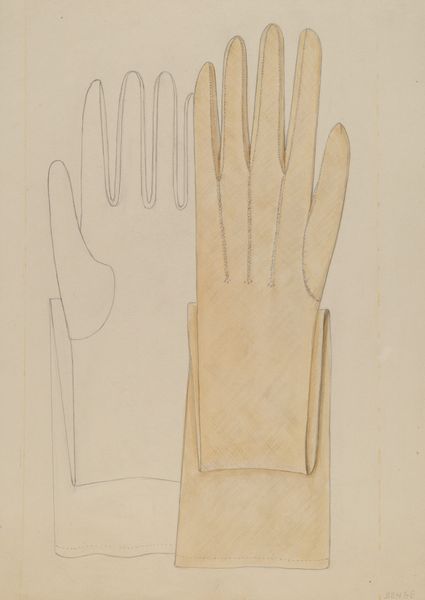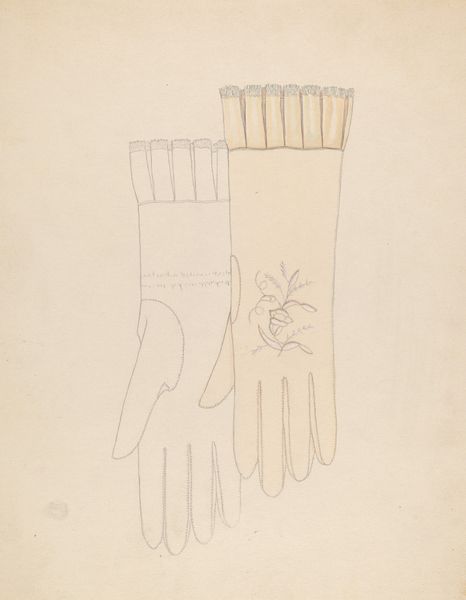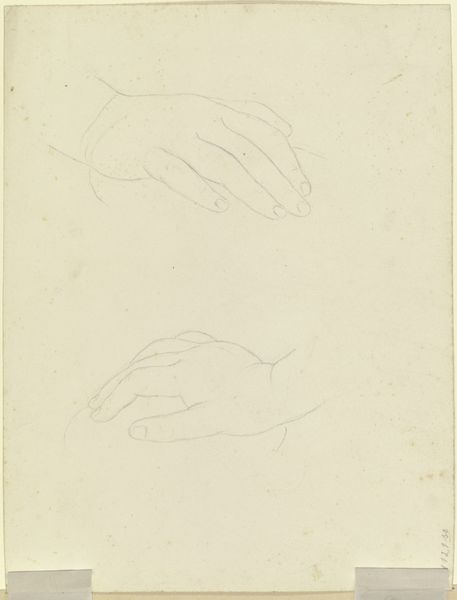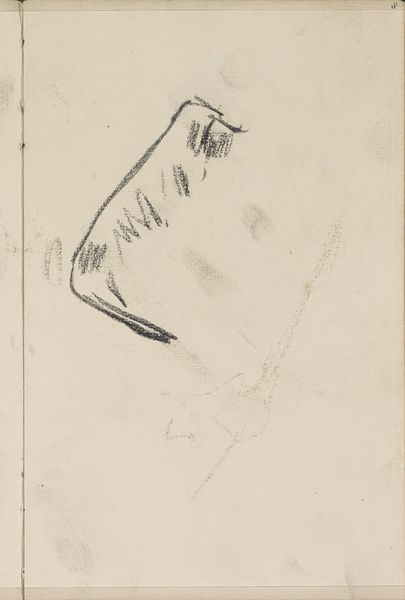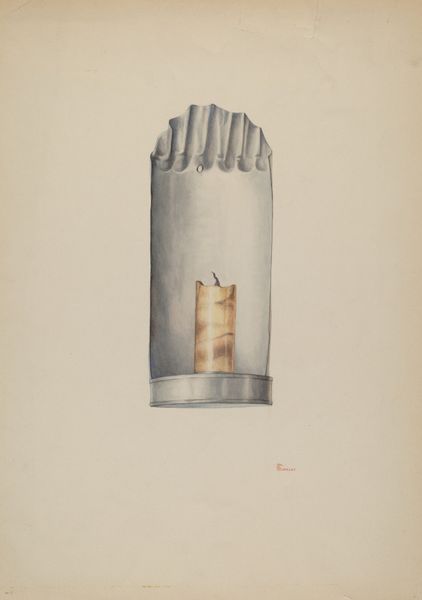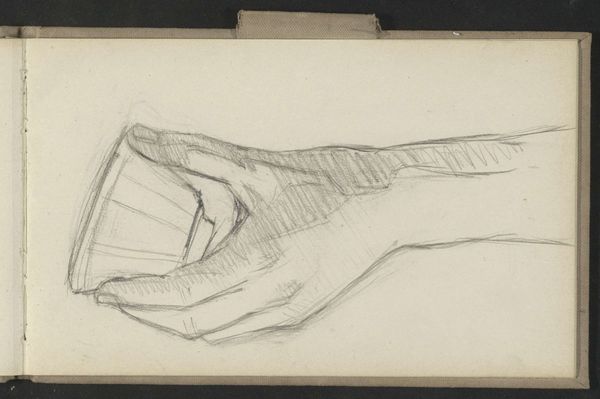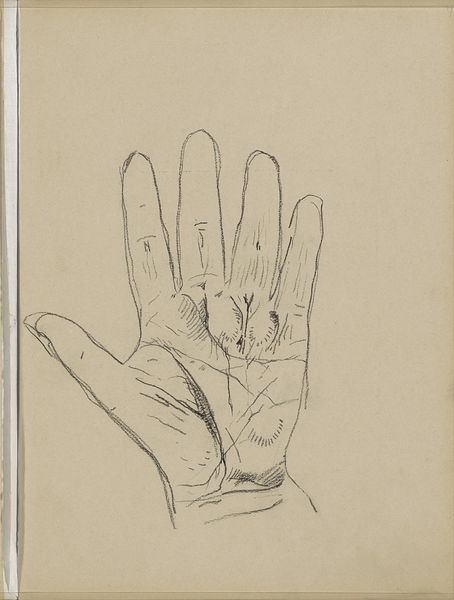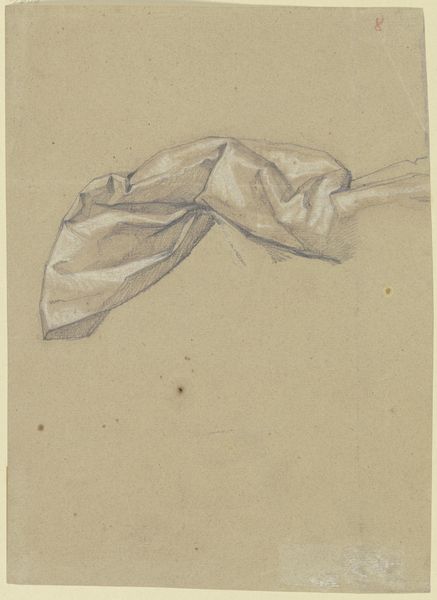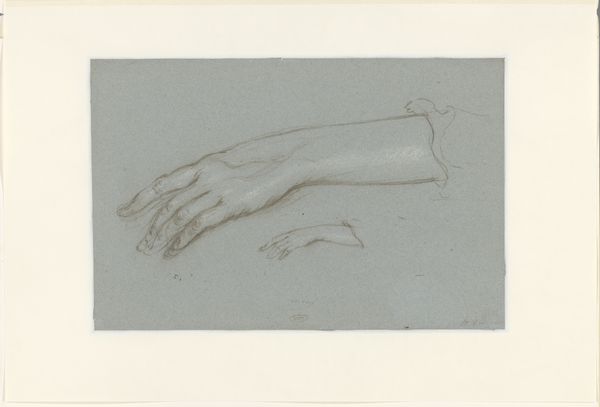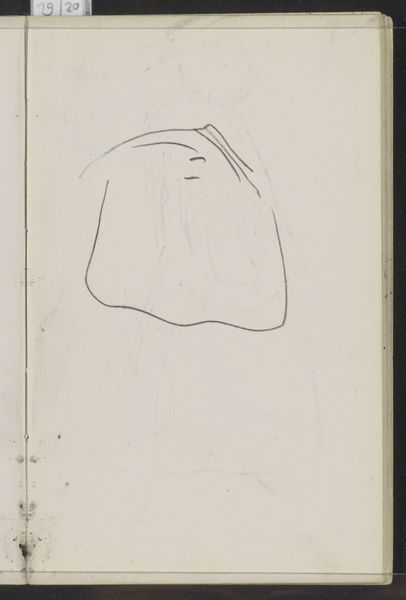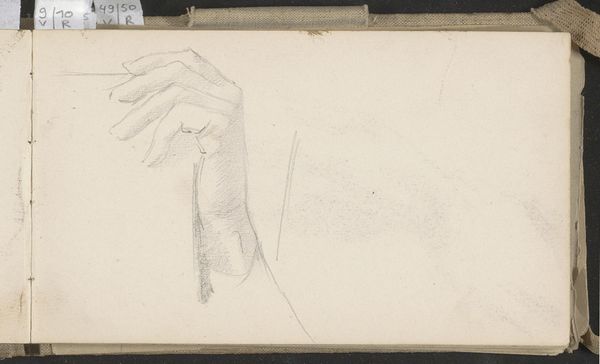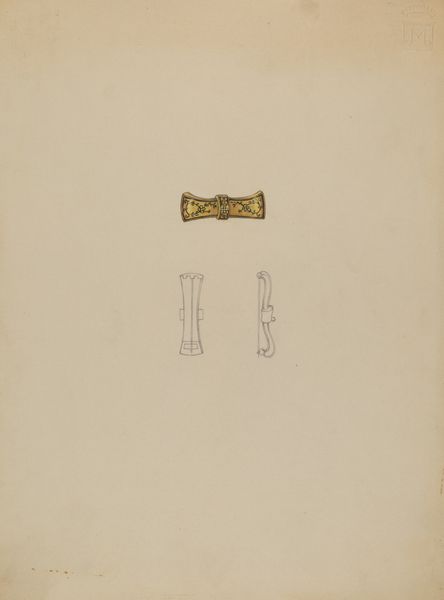
drawing, paper, pencil
#
drawing
#
paper
#
pencil
#
realism
Dimensions: overall: 29.1 x 22.8 cm (11 7/16 x 9 in.)
Copyright: National Gallery of Art: CC0 1.0
Curator: Looking at Francis Law Durand's piece, simply titled "Mitts," created around 1937 using pencil on paper, I'm struck by its quiet, almost melancholic stillness. Editor: Yes, it evokes a sense of restraint, doesn't it? The neutral color palette, the solitary glove... it feels loaded with untold stories of the time. Durand composed this during the Great Depression. What's your interpretation of its significance in that context? Curator: Given the socio-economic backdrop, the simplicity of the subject—a humble pair of work gloves—speaks volumes. In this period, we see artists grapple with depicting everyday realities. What are the gloves suggesting about identity, labor, and even protection within a society facing hardship? There's a poignant dignity here. Editor: I agree. The fact that they're depicted neatly folded perhaps emphasizes a desire for order and control amid chaos, the longing for stability so prevalent in that era. What do you see regarding how it engages with the art establishment of its time? Curator: It resists the grand narratives often associated with traditional art history. "Mitts" offers an intimate glimpse into a working-class existence. By focusing on such a mundane object, Durand might be subtly challenging the elitism embedded within art institutions. Editor: Certainly. And considering Durand's biography and involvement with socially conscious movements, it would reinforce the idea that this artwork actively engages with a wider public, offering a window into the lives and labor often overlooked in traditional fine art contexts. The formal qualities – the almost clinical rendering, for instance – might speak of a very deliberate kind of visual testimony. Curator: Absolutely. And its enduring resonance lies precisely in its capacity to invite us into such important questions about value, visibility, and the politics of representation. I'll consider those angles next time I encounter it. Editor: Indeed, "Mitts," though modest in its depiction, sparks an inquiry into power, narrative and whose stories get told—or remain carefully folded. Thank you.
Comments
No comments
Be the first to comment and join the conversation on the ultimate creative platform.
